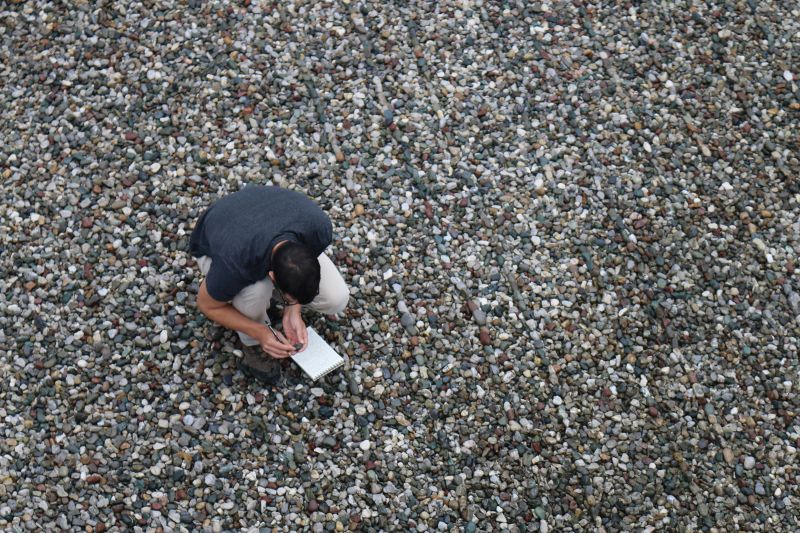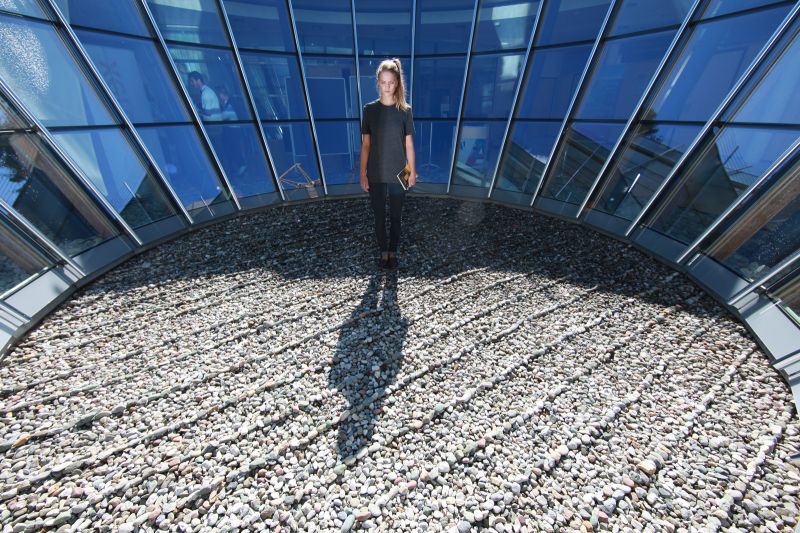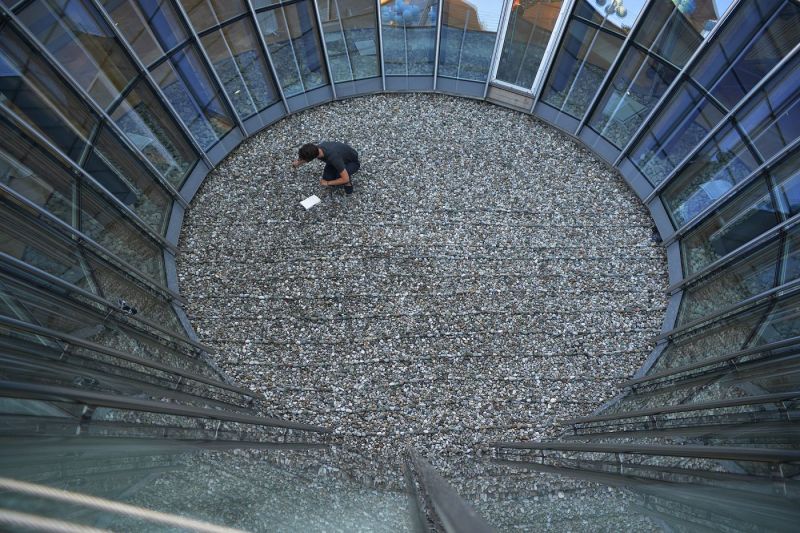The Great Transfer – Forum Alpbach
Alpbach Team
The Great Transfer is a performative installation, which took place at Forum Alpbach 2015. In this 12-day performance, a group of students silently inscribed the stories of refugees into stones at the very heart of the congress center. The stories revolved around the topics of home, secureness and familiarness. At the opening of the Built Environment Symposium, the stories were presented to the audience and became audible for the first time.
The performance was based on 12 interviews conducted with refugees, in which they describe their ideas of home. The descriptions of their houses and the daily routines connected to their homes, drew a sensitive and contrasting image in comparison to the common portrayals of refugees as masses, especially in the media. For the performance, the students used a exposed, yet simultaneously isolated space in the center of the congress: a glass cone, transporting light into the building, that can be accessed through a small door. This space marks a small piece of no-one’s land, that provides high visibility but offers no audibility and hence no voice to the performers. This spacial situation mimics the position of refugees coming to Europe these days: at the center of attention, yet deprived of a voice.
For the performance, the decorative stones inside this cone were put into straight lines from south to north, suggesting the idea of system and orientation. In this space, a daily performance took place for 12 days straight. Every day, one student would enter the cone and read one of the interviews out loud - yet seemingly voiceless for passers-by- inside the congress center. Then, the performer would start to slowly dissolve the stone lines, by writing down the interview on the stones, one word per stone. Each stone with a word would then be put back into the random order that was there before. The stones re-integrated into non-ordered confusion and the words written on them floated into the background again. In this manner, the stone lines inside the cone continuously disappeared. By the end of the 12 days, the cone looked the way it looked before, as if nothing had changed. The stories of the refugees, now inscribed into the center of the congress center remain invisible. Or only visible if you look close enough.
The performace mimiced the position of refugees in Europe: at the center of attention, yet deprived of a voice.
The tension between the lack of audibility and intense visibility which was built up throughout the 12- day performance, was resolved at the opening of the Built Environment Symposium. There, the interviews were read out again, but now for the first time they were also audible. The students created an experimental setting, to make the experience of the texts more immediate. The stage was left empty, while the performers spread randomly in the audience. Creating a polylogue conversation between the texts - sometimes overlapping, sometimes standing alone- the audience never knew where the next voice would pop up from, or where exactly that sentence they just heard, came from. The enactment of seven voices overlapping, separating and joining in an accorded way, aimed at creating a more immediate experience of a stranger’s destiny and past for the audience.
The project tried to contrast the event-like character that is assigned to cultural contributions in settings like congresses or Expo’s. Refusing to compete in the market for attention in an overcrowded setting, “The Great Transfer” aimed to underline the qualities of stillness and delicacy in relation to a topic often misused by those screaming the loudest.
Idea: Cosima Terrasse
Interviews: Lisa Puchner and Cosima Terrasse
- Time
- Summer 2015
- Location
- Alpbach
- Tyrol
- Team
- Miriam Hübl
- Dieter Lang
- Alejandra Loreto
- Peter Oroszlany
- Lisa Puchner
- Christoph Steininger
- Cosima Terrasse. Mentors: Herwig Turk
- Anton Falkeis


